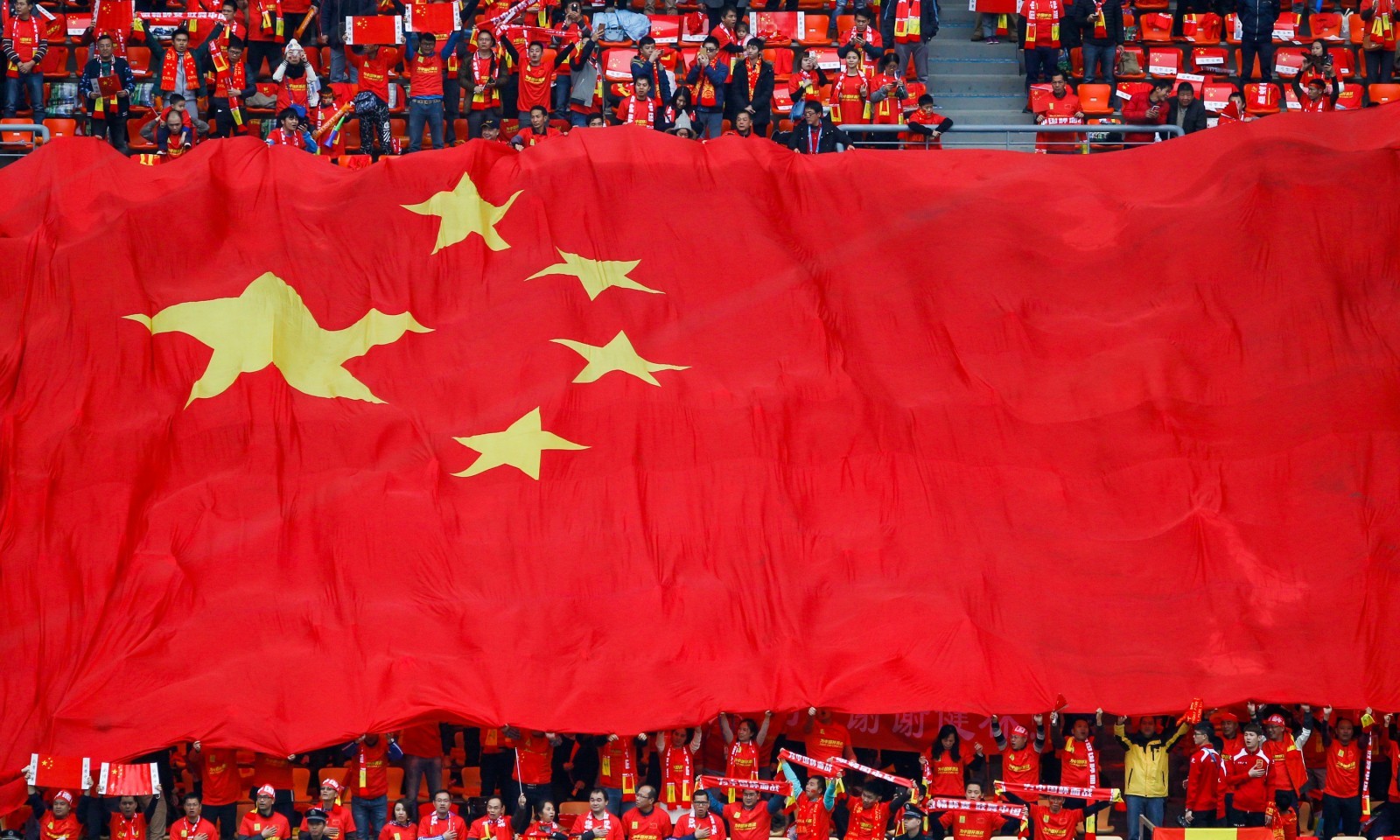China
In China, Fraud Adds to Bank-Stock Volatility
Stock markets around the world are pounding bank stocks. There’s an added concern about banks in China: how the market falls may be exposing fraud in their operations.

Stock markets around the world are pounding bank stocks. There’s an added concern about banks in China: how the market falls may be exposing fraud in their operations.
Measured on a purchasing power parity (PPP) basis that adjusts for price differences, China in 2009 stood as the second-largest economy in the world after the US, although in per capita terms the country is still lower middle-income.
China continues to lose arable land because of erosion and economic development.
The People’s Republic of China is the world’s second largest economy after the United States by both nominal GDP ($5 trillion in 2009) and by purchasing power parity ($8.77 trillion in 2009).
Some economists believe that Chinese economic growth has been in fact understated during much of the 1990s and early 2000s, failing to fully factor in the growth driven by the private sector and that the extent at which China is dependent on exports is exaggerated.
The two sectors have differed in many respects.
China has acquired some highly sophisticated production facilities through trade and also has built a number of advanced engineering plants capable of manufacturing an increasing range of sophisticated equipment, including nuclear weapons and satellites, but most of its industrial output still comes from relatively ill-equipped factories.
China’s ongoing economic transformation has had a profound impact not only on China but on the world.
The growth in both outbound investment from, and inbound investment to, China reflects the nation’s rising economic power and attractiveness as an investment destination.
“China is now the fifth largest investing nation worldwide, and the largest among the developing nations,” said Shen Danyang, vice-director of the ministry’s press department.
China is expected to have 200 million cars on the road by 2020, increasing pressure on energy security and the environment, government officials said yesterday.
China’s challenge in the early 21st century will be to balance its highly centralized political system with an increasingly decentralized economic system.
Agriculture is by far the leading occupation, involving over 50% of the population, although extensive rough, high terrain and large arid areas – especially in the west and north – limit cultivation to only about 10% of the land surface.
Except for the oasis farming in Xinjiang and Qinghai, some irrigated areas in Inner Mongolia and Gansu, and sheltered valleys in Tibet, agricultural production is restricted to the east.
Horses, donkeys, and mules are work animals in the north, while oxen and water buffalo are used for plowing chiefly in the south.
China is one of the world’s major mineral-producing countries.
China is among the world’s four top producers of antimony, magnesium, tin, tungsten, and zinc, and ranks second (after the United States) in the production of salt, sixth in gold, and eighth in lead ore.
Coal is the single most important energy source in China; coal-fired thermal electric generators provide over 70% of the country’s electric power.
Since the 1980s China has undertaken a major highway construction program.
Go here to read the rest:
In China, Fraud Adds to Bank-Stock Volatility
China
Lingang New Area in Shanghai Opens First Cross-Border Data Service Center to Streamline Data Export Process

The Lingang New Area in Shanghai has launched China’s first Cross-Border Data Service Center to facilitate data export for companies in Shanghai. The center will help with applications, data catalogs, and management, aiming to provide legal and safe cross-border data transfer mechanisms.
The Lingang New Area in Shanghai’s Pilot Free Trade Zone has launched a new cross-border data service center to provide administrative and consulting services to companies in Shanghai that need to export data out of China. The service center will help facilitate data export by accepting applications from companies for data export projects and is tasked with formulating and implementing data catalogs to facilitate data export in the area. The Shanghai cross-border data service center will provide services to companies across the whole city.
The Lingang New Area in the Shanghai Pilot Free Trade Zone has launched China’s first Cross-Border Data Service Center (the “service center”). The service center, which is jointly operated by the Cybersecurity Administration of China (CAC) and the local government, aims to further facilitate legal, safe, and convenient cross-border data transfer (CBDT) mechanisms for companies.
The service center will not only serve companies in the Lingang New Area but is also open to companies across Shanghai, and will act as an administrative service center specializing in CBDT.
In January 2024, the local government showcased a set of trial measures for the “classified and hierarchical” management of CBDT in the Lingang New Area. The measures, which have not yet been released to the public, seek to facilitate CBDT from the area by dividing data for cross-border transfer into three different risk categories: core, important, and general data.
The local government also pledged to release two data catalogs: a “general data” catalog, which will include types of data that can be transferred freely out of the Lingang New Area, and an “important data” catalog, which will be subject to restrictions. According to Zong Liang, an evaluation expert at the service center, the first draft of the general data catalog has been completed and is being submitted to the relevant superior departments for review.
In March 2024, the CAC released the final version of a set of regulations significantly facilitating CBDT for companies in the country. The new regulations increase the limits on the volume of PI that a company can handle before it is required to undergo additional compliance procedures, provide exemptions from the compliance procedures, and clarify the handling of important data.
Also in March, China released a new set of technical standards stipulating the rules for classifying three different types of data – core, important, and general data. Importantly, the standards provide guidelines for regulators and companies to identify what is considered “important” data. This means they will act as a reference for companies and regulators when assessing the types of data that can be exported, including FTZs such as the Lingang New Area.
This article is republished from China Briefing. Read the rest of the original article.
China Briefing is written and produced by Dezan Shira & Associates. The practice assists foreign investors into China and has done since 1992 through offices in Beijing, Tianjin, Dalian, Qingdao, Shanghai, Hangzhou, Ningbo, Suzhou, Guangzhou, Dongguan, Zhongshan, Shenzhen, and Hong Kong. Please contact the firm for assistance in China at china@dezshira.com.
China
A Concise Guide to the Verification Letter of Invitation Requirement in the China Visa Process

The application procedures for business visas to China have been simplified, with most foreigners now able to apply for an M/F visa using only an invitation letter from a Chinese company. Some countries are eligible for visa-free entry. However, a Verification Letter of Invitation may still be needed in certain cases. Consult the local Chinese embassy for confirmation.
In light of recent developments, the application procedures for business visas to China have undergone substantial simplification. Most foreigners can now apply for an M/F visa using only the invitation letter issued by a Chinese company. Additionally, citizens of certain countries are eligible to enter China without a visa and stay for up to 144 hours or even 15 days.
However, it’s important to note that some applicants may still need to apply for a “Verification Letter of Invitation (邀请核实单)” when applying for an M/F visa to China. In this article, we will introduce what a Verification Letter of Invitation is, who needs to apply for it, and the potential risks.
It’s important to note that in most cases, the invitation letter provided by the inviting unit (whether a public entity or a company) is sufficient for M/F visa applications. The Verification Letter for Invitation is only required when the Chinese embassies or consulates in certain countries specifically ask for the document.
Meanwhile, it is also essential to note that obtaining a Verification Letter for Invitation does not guarantee visa approval. The final decision on granting a visa rests with the Chinese embassy abroad, based on the specific circumstances of the applicant.
Based on current information, foreign applicants in Sri Lanka and most Middle East countries – such as Turkey, Iran, Afghanistan, Syria, Pakistan, and so on – need to submit a Verification Letter for Invitation when they apply for a visa to China.
That said, a Verification Letter for Invitation might not be required in a few Middle East countries, such as Saudi Arabia. Therefore, we suggest that foreign applicants consult with their the local Chinese embassy or consulate to confirm in advance.
This article is republished from China Briefing. Read the rest of the original article.
China Briefing is written and produced by Dezan Shira & Associates. The practice assists foreign investors into China and has done since 1992 through offices in Beijing, Tianjin, Dalian, Qingdao, Shanghai, Hangzhou, Ningbo, Suzhou, Guangzhou, Dongguan, Zhongshan, Shenzhen, and Hong Kong. Please contact the firm for assistance in China at china@dezshira.com.
China
Uyghurs remember 1990 Baren Uprising over China’s forced abortions

Uyghurs and sympathetic protesters rallied in Washington, Istanbul and Munich on Friday to remember a 1990 uprising in Xinjiang triggered by anger over China forcing Uyghur women to get abortions and sterilizations.
The death toll from the Baren uprising – put down by Chinese troops – ranges from a couple dozen to as many as 3,000, according to the World Uyghur Congress.
Chinese authorities never held a public investigation, and Human Rights Watch said that a reliable tally of the casualties may never be known.
The rebellion started on the evening of April 4, 1990, when over 200 Uyghurs tried to break into a local government office in Baren, a town of 19,000 in Akto county on the western edge of the Taklamakan Desert in Xinjiang’s Kizilsu Kyrgyz Autonomous Prefecture.
In response, the Chinese government dispatched over 18,000 troops to quell protests, killing an unknown number of people on April 5 and subsequent days.
Seminal moment
The uprising was a seminal moment because it began a period of increased Chinese repression of the mostly Muslim Uyghurs, who today number about 11 million. Those policies have led to what the United States and other Western nations have labeled a genocide and crimes against humanity.
“The Baren Uprising was one of the earliest expressions of growing resentment within Uyghur society in the 1990s against the oppressive measures of the Chinese authorities,” said Dolkun Isa, president of the World Uyghur Congress, or WUC, in a statement.
“The Chinese government’s violent crackdown on the protestors signaled a broader escalation in the violence against the Uyghur people, which over the last decades has evolved into genocide.”
China views the April 4 incident as a “counter-revolutionary armed riot” between Uyghur militants and Chinese government forces, incited by the East Turkistan Islamic Party. People linked to the party attacked the government building, kidnapping 10 people, killing six armed police officers, and blowing up two vehicles.
Protests
Hundreds of people demonstrated in front of the Chinese Embassy in Berlin and the Chinese Consulate in Munich, Germany. Dozens of people protested outside the Chinese Consulate in Istanbul, Turkey, and at a commemorative event in Ankara attended by members of two of Turkey’s political parties.
Uyghurs held another commemorative event in Sweden. Others gathered in the Netherlands, Britain and in Central Asian nations.

In Washington, about a dozen protesters gathered outside Chinese Embassy on Friday and shouted, “China, stop the Uyghur genocide” and “We want freedom.”
The rally also featured an iftar — an evening meal eaten by Muslim families after the daylong fasts during Ramadan — with Uyghur cuisine to highlight the Chinese Communist Party’s persecution of Uyghur Muslims during the Islamic holy month, which runs from March 10 to April 9 this year.
WUC Vice President Zubeyra Shamseden urged the international community to hold the perpetrators of human rights violations against the Uyghurs accountable for their crimes.
Rushan Abbas, executive director of the Campaign for Uyghurs, called the Baren Uprising a vicious example of the Chinese Communist Party’s ruthless tactics attacking the legitimate demands of its people for dignity and basic human rights.”
“It started in Baren when people protested the forced sterilization and forced abortions of Uyghur women,” she told RFA. “Today, they are still continuing with this full-fledged act of genocide.”
Translated by RFA Uyghur. Edited by Roseanne Gerin and Malcolm Foster.
Read the rest of this article here >>> Uyghurs remember 1990 Baren Uprising over China’s forced abortions













